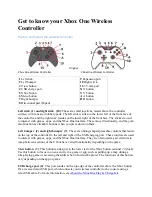
CAUTION
Installation at high altitude:
At altitudes above 2 km, contact Danfoss regarding PELV.
3.4 Earth Leakage Current
WARNING
DISCHARGE TIME
Touching the electrical parts could be fatal - even after the
equipment has been disconnected from mains.
Also make sure that other voltage inputs have been
disconnected, such as load sharing (linkage of DC
intermediate circuit), as well as the motor connection for
kinetic back-up.
Before touching any electrical parts, wait at least the
amount of time indicated in the
Table 2.1
.
Shorter time is allowed only if indicated on the nameplate
for the specific unit.
NOTE
Leakage Current
The earth leakage current from the frequency converter
exceeds 3.5 mA. To ensure that the earth cable has a good
mechanical connection to the earth connection, the cable
cross section must be at least 10 mm
2
or 2 rated earth
wires terminated separately.
Residual Current Device protection RCD
This product can cause a DC current in the protective
conductor. Where a residual current device (RCD) is used
for protection in case of direct or indirect contact, only an
RCD of Type B is allowed on the supply side of this
product. Otherwise, another protective measure shall be
applied, such as separation from the environment by
double or reinforced insulation, or isolation from the
supply system by a transformer. See also Application Note
Protection against Electrical Hazards, MN90G
.
Protective earthing of the frequency converter and the use
of RCDs must always follow national and local regulations.
3.5 Extreme Running Conditions
Short Circuit (Motor Phase – Phase)
Current measurement in each of the three motor phases or
in the DC link, protects the frequency converter against
short circuts. A short circuit between two output phases
causes an overcurrent in the inverter. The inverter is
turned off individually when the short circuit current
exceeds the permitted value (Alarm 16 Trip Lock).
To protect the frequency converter against a short circuit
at the load sharing and brake outputs see the design
guidelines.
Switching on the Output
Switching on the output between the motor and the
frequency converter is fully permitted. The frequency
converter is not damaged in any way by switching on the
output. However, fault messages may appear.
Motor-generated Over-voltage
The voltage in the intermediate circuit is increased when
the motor acts as a generator. This occurs in following
cases:
1.
The load drives the motor (at constant output
frequency from the frequency converter), that is
the load generates energy.
2.
During deceleration ("ramp-down") if the moment
of inertia is high, the friction is low and the ramp-
down time is too short for the energy to be
dissipated as a loss in the frequency converter,
the motor and the installation.
3.
Incorrect slip compensation setting (
1-62 Slip
Compensation
) may cause higher DC link voltage.
The control unit may attempt to correct the ramp if
possible (
2-17 Over-voltage Control
.)
The inverter turns off to protect the transistors and the
intermediate circuit capacitors when a certain voltage level
is reached.
Mains Drop-out
During a mains drop-out, the frequency converter keeps
running until the intermediate circuit voltage drops below
the minimum stop level, which is typically 15% below the
frequency converter's lowest rated supply voltage. The
mains voltage before the drop-out and the motor load
determines how long it takes for the inverter to coast.
3.5.1 Motor Thermal Protection
To protect the application from serious damages VLT
®
AutomationDrive offers several dedicated features
Torque Limit: The Torque limit feature the motor is
protected for being overloaded independent of the speed.
Torque limit is controlled in
4-16 Torque Limit Motor Mode
and or
4-17 Torque Limit Generator Mode
and the time
before the torque limit warning shall trip is controlled in
14-25 Trip Delay at Torque Limit
.
Current Limit: The current limit is controlled in
4-18 Current
Limit
and the time before the current limit warning shall
trip is controlled in
14-24 Trip Delay at Current Limit
.
Min Speed Limit: (
4-11 Motor Speed Low Limit [RPM]
or
4-12 Motor Speed Low Limit [Hz]
) limit the operating speed
range to for instance between 30 and 50/60Hz. Max Speed
Limit: (
4-13 Motor Speed High Limit [RPM]
or
4-19 Max
Output Frequency
) limit the max output speed the can
provide
Introduction to VLT® Micro ...
VLT
®
Micro Drive FC 51 Design Guide
24
MG02K202 - VLT
®
is a registered Danfoss trademark
3
3
Buy: www.ValinOnline.com | Phone 844-385-3099 | Email: [email protected]
















































